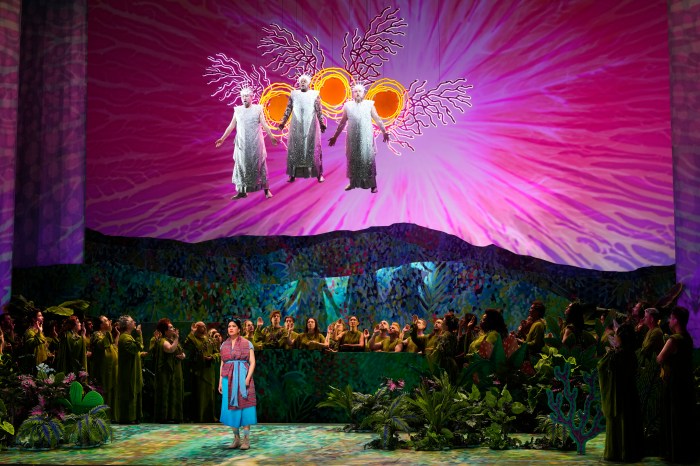In an era dominated by movies that spell things out, that annihilate you with broad sentimentality, telegraphed emotions and over-the-top dramatics, it seems like there isn’t much of a place for a picture like Pawel Pawlikowski’s “Ida.”
This is an austere, studious throwback to films by such masters of art cinema as Robert Bresson, a movie that earns the “pure cinema” categorization (a term used by critics and academics that refers to movies driven by sound, editing, visual imagery and the cinema’s other defining characteristics, rather than plot or dialogue).
That’s not to suggest the picture lacks a story or a plot. It has a rather astounding one, in fact, centered on a novitiate nun (Agata Trzebuchowska) in Poland, circa 1962, who discovers that she was born Jewish and hidden from the Nazis just before taking her vows. And that her mother, father and brother were killed.
“Ida” chronicles her search for her roots, alongside her aunt Wanda (Agata Kulesza) and the spiritual crisis commenced by the news.
Pawlikowski’s camera observes his characters with a modicum of interference, in scenes that play out through doorways and across gray, foggy fields. The camera typically remains at a distance, so that when it cuts closer to the characters, the weight of each decision resonates.
The backgrounds are spare and elemental, looming over individuals struggling with a lingering trauma and the disquieting sense that their everyday lives are little more than a series of distractions from the immovable pain.
Much could be made of the movie as a national allegory, in which the experiences of the characters stand in for Poland’s uneasy relationship with its own rocky past, the persistent upheaval that has defined so much of that nation’s history.
“Ida” is a quiet, patient movie that runs a mere 80 minutes, but in the fashion of the best cinematic works it offers a world of riches just below the surface.

















